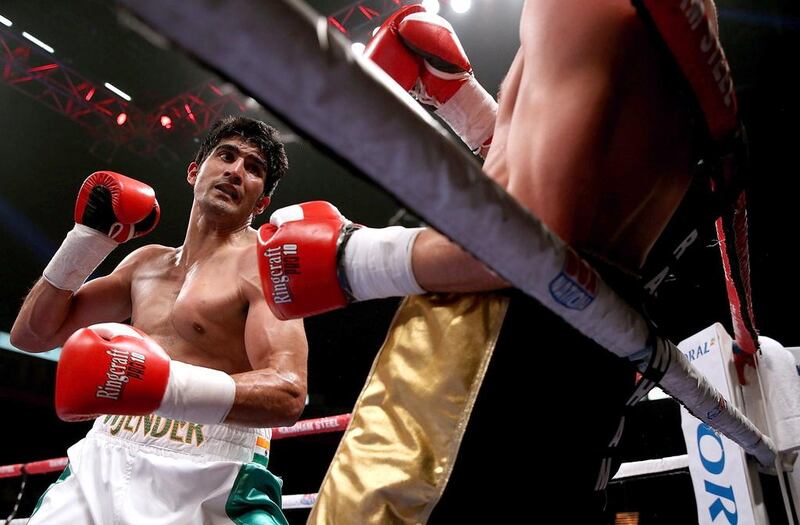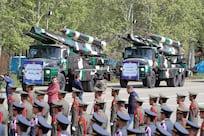In his new weekly column, Wisden India’s editor-in-chief Dileep Premachandran takes a look at the sporting scene in India, with a heavy focus on the country’s No 1 sport, cricket.
When Vijender Singh steps into the ring in Liverpool on March 12, to take on Hungary’s Alexander Horvath, it will be the fourth fight of a fledging professional career. None of the previous ones went the distance.
Sonny Whiting was punched into a stupor by the third round, while Dean Gillen did not even make it past the first. Vijender’s last opponent, Bulgaria’s Samet Hyuseinov, lasted a round and a half before a flurry of punches forced the referee to step in.
Star Sports, the biggest sports broadcaster in India, will show the Horvath fight live, but opinions will be divided in a country where the boxer from Haryana was briefly a sporting figure perhaps second only to Sachin Tendulkar. That was in Beijing in August 2008, when he outpointed Ecuador’s Carlos Gongora 9-4 in the quarter-final to guarantee India a first boxing medal at the Olympics.
Vijender was 22 then, and though Cuba’s Emilio Correa outsmarted him in the semi-final, hopes were high that he would go one better in London in 2012. It did not quite pan out that way.
After sneaking past Terrell Gausha of the US (16-15) in the round of 16, Vijender ran into Uzbekistan’s Abbos Atoev in the quarter-final.
Two years earlier, in the Asian Games final, Vijender had outclassed Atoev 7-0. This time, the Uzbek prevailed 17-13 in a battle of attrition.
The disappointment back home was palpable. Even those that didn’t know their jab from an upper cut passed judgement on Vijender’s performance.
What was noticeable, however, was how he seemed a little less sharp than he had been four years earlier. He looked a man in need of a new challenge.
Last summer, he accepted that, joining Frank Warren’s stable of fighters and turning professional a year ahead of the Olympics in Rio de Janeiro.
It wasn’t as though time had stood still in Indian boxing either. Vikas Krishan Yadav, who won lightweight (60kg) gold at the Asian Games in 2010, graduated to middleweight (75kg), and made enough progress to win silver at the Asian Boxing Championships last year.
There was no guarantee, therefore, that Vijender would have waltzed his way to Rio.
Despite that, there were many that questioned his motivations when he announced the decision to give up the amateur code for the shark tank that is pro boxing. “It is really very surprising for me,” said Gurbaksh Singh Sandhu, the national boxing coach.
“I am in a state of shock because I never expected this would happen. But obviously, he must have given some thought to the idea and decided accordingly. At the end of the day, it is his career.”
It is indeed. The best response to the idiotic “mercenary” labels came from Shamya Dasgupta, whose book Bhiwani Junction is the definitive work on the mushrooming boxing scene in India.
“Your mercenary is my professional, a view I have held from the time I came to know of Singh’s decision,” he wrote.
“It’s not just Singh, but any sportsperson who chooses a more lucrative career option over the rather over-rated virtue of patriotism. They are doing it for the money. That’s right, sir, the same reason you changed your last job.
“Such hypocrisy! Even as we try to give our children the best education possible and take loans to send them to America, our athletes must be paragons of virtue [if shunning money is a virtue] who live and die for the tricolour.”
The carping at home aside, the biggest challenge for Vijender has been adjusting to what is effectively another sport.
In the amateur arena, greatly influenced by Cuban coaches who have worked as consultants for decades, the focus is on jabs and quick combinations that score points.
In the real world, all it often takes is one big haymaker.
Back in 2008, Vijender’s first bout in Beijing was hopelessly one-sided, finishing 13-2 in his favour. His opponent that day was Badou Jack from Gambia.
These days, The Ripper as he’s known, represents Sweden – the land of his birth – and has built a 20-1-1 record on his way to the WBC Super-middleweight title.
Vijender’s fellow bronze medallist from Beijing, Ireland’s Darren Sutherland, committed suicide a year later, after making a 4-0 start to his pro career.
Boxing can be a cruel, ephemeral sport, and Vijender does not owe anyone – least of all, ungrateful critics back home – anything as he follows a dream that started two decades ago in a city, Bhiwani, which has now come to be known as Little Cuba.
India cricketer Ashish Nehra has been worth the wait
Ashish Nehra was 19 when he played the first of his 17 Tests for India.
The last, in Rawalpindi in 2004, was a few days before his 25th birthday.
His final ODI was the 2011 World Cup semi-final against Pakistan, as high-pressure a game as any India has hosted. He was the most economical bowler on either side, finishing with 2 for 33.
Some, though, just aren’t lucky. In the final in 2003, as an Australian batting masterclass blew India away, Nehra was the only one of the pacers to hold it together.
Eight years later, there would be no redemption. A fractured middle finger kept him out of the final.
Out of sight, and certainly out of mind. It was almost another five years before he wore the Indian shirt again, in Australia this January.
His gangly giraffe-like frame has made Nehra an object of ridicule for most of his career.
It didn’t help that one of his finest moments – 6 for 23 against England in the 2003 World Cup – was accompanied by the sight of him throwing up bananas by the side of the pitch.
When he failed to defend 13 in a World Cup game against South Africa in 2011, the vitriol and derision reached extreme levels.
But within the fraternity, the view has been very different.
“He hasn’t got a huge army of fans, people criticise him but within the camp, he has been excellent,” said Stephen Fleming, then Chennai Super Kings coach, after Nehra had seen off Virat Kohli and AB de Villiers in an IPL game in 2014.
Fast forward to the present where the inexperienced Jaspreet Bumrah and Hardik Pandya are the other pace options in India’s first-choice Twenty20 playing XI. Nehra, who turns 37 on April 29, finds himself the leader of the pack for another global event on home soil.
After years of battling various injuries and selectors’ whims, who would grudge him one final twist in the tale?
sports@thenational.ae
Follow us on Twitter @NatSportUAE
Like us on Facebook at facebook.com/TheNationalSport





